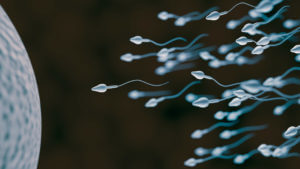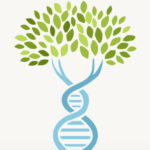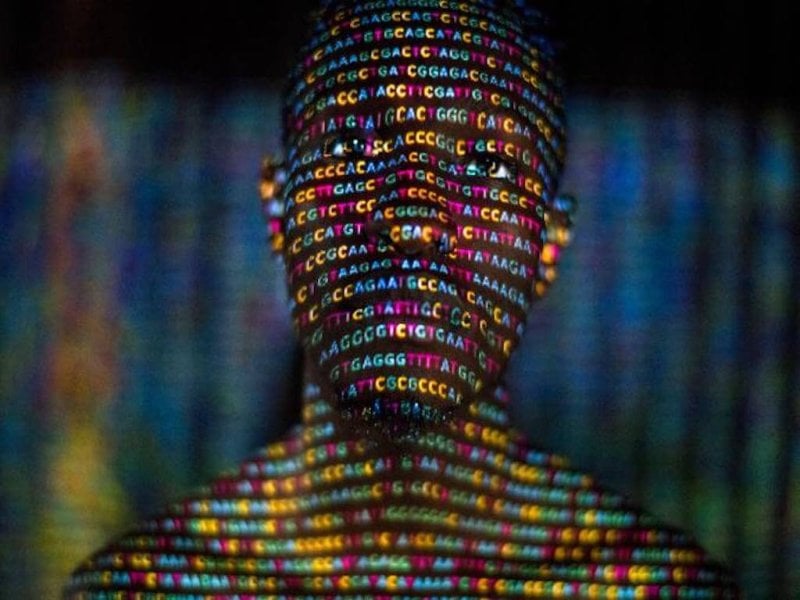“Genetic databases and the future of donor anonymity” appears in the journal Human Reproduction. The author is Guido Pennings, from the department of philosophy and moral science at the Bioethics Institute Ghent. My opinion is that Dr. Pennings’ opinion fails to capture the complexity of donation.
“Not Parent Expected”
From 1950 until 1958, a man whom I do not know donated his sperm to help infertile couples in Brooklyn. As a result, my sister and I have, at last count, six half-siblings.
 Like many thousands of others, we’ve discovered that we were donor-conceived (DC), some of us learning so from consumer DNA ancestry testing. Contrary to the cheery ads, the companies’ services aren’t just for entertainment or idle curiosity.
Like many thousands of others, we’ve discovered that we were donor-conceived (DC), some of us learning so from consumer DNA ancestry testing. Contrary to the cheery ads, the companies’ services aren’t just for entertainment or idle curiosity.
I learned that the tests I’ve had to spot early glaucoma based on my supposed paternal history weren’t necessary. And when a half-sister told me her cancer history, it instantly compounded what I already knew, and I recently had surgery to prevent a third cancer. She may have saved my life.
The thousands of us chat at online support communities for NPE (“not parent expected”) individuals. We help others to navigate the initial shock, denial and confusion, then the rage, despair and sadness as we rerun the tapes of our pasts. Some are lucky enough to confirm donor conception from elderly relatives, or already knew. Others can triangulate back from newly-identified distant cousins to reveal donors, if we want to know. For now, I don’t.
Unleashed feelings can reverberate beyond donor and offspring. Being the spouse or “social child” of a parent outed as having other children from a long-ago donation brings its own special hell. Families can detonate.
Our stories are finally trickling into the media.
In the book Inheritance, Dani Shapiro writes of finding her sperm donor, remarkably quickly. Fictional takes like the 2013 film Delivery Man and the quasi-true Netflix series Sisters joke too much. Being an instadad to 100 18-year-olds or bedding your half-sibling aren’t funny situations. They happen.
 Dr. Pennings legitimatizes and prioritizes secrecy, concluding that “privacy by both donors and recipients, and, even if not enforceable, should be respected by all parties in good faith.” It’s great that he addresses both sides – sperm and eggs, donors and recipients – but such sweeping advice seems oblivious to the emotional landslide of these situations.
Dr. Pennings legitimatizes and prioritizes secrecy, concluding that “privacy by both donors and recipients, and, even if not enforceable, should be respected by all parties in good faith.” It’s great that he addresses both sides – sperm and eggs, donors and recipients – but such sweeping advice seems oblivious to the emotional landslide of these situations.
Academic tunnel vision
I nearly didn’t read beyond the first paragraph of the paper, which unveils a stunning ignorance of the science and the psychology. The cluelessness begins with the first sentence:
“The debate on the effects of ancestry databases on donor anonymity is based on a number of cases mentioned in the media.” Has he not considered the online communities, just an occasional People magazine or newspaper?
Dr. Pennings does not know what he does not know. He minimizes without accurately accessing magnitude, just listing bioethics papers. Check out the stats at the Donor Sibling Registry, which has been around since 2000.
Another comment in the intro:
One may be lucky but good matches guaranteeing a close genetic relationship are at the moment relatively rare.
Um, no. And the matches are based on sound science, not luck, nor are they rare, unless perhaps compared to the entire global population. What is Dr. Pennings training in genetics, or experience in genetic genealogy? We learn soon that it is sparse:
It suffices to read a few articles in which the methodology is described to realize that identification is a highly complex process demanding expert skills and knowledge.
His dismissive tone indicates that this bioethicist hasn’t read the crystal-clear white papers from AncestryDNA, the explanations from other companies, nor the excellent materials from the International Society of Genetic Genealogy or CeCe Moore’s DNA Detectives.

I summarized the logic behind DNA ancestry testing here at Genetic Literacy Project (“I’m a geneticist. A DNA test uncovered a half-sister and sparked painful questions”), just two weeks before I discovered the others. Here’s a recap of the science:
Consumer DNA is tested for 700,000 or so sites spanning the genome that vary in a population – each site can be adenine (A), guanine (G), cytosine (C), or thymine (T), the DNA bases. These markers are single nucleotide polymorphisms – aka SNPs. It’s easy to see that this approach generates enough variation to distinguish people. Imagine subsets of 700,000 items of clothing and adornments.
Superimposed on the number of shared SNPs is how many of them are contiguous, inherited together like long sentences copied and pasted into new documents. The longer the shared chunks, the closer the genetic relationship, for the stretches separate at each generation. The unit of measurement is the centimorgan, which I explained here and here.

I offer my own data to illustrate the “high complexity”:
My full sister and I share 2,794 cM across 57 segments
Half-sis #1 and I share 2,084 cM across 60 segments
Half-sis #2 and I share 1,950 cM across 63 segments
Half-sis #3 and I share 1,687 cM across 51 segments
We share 58-60 percent of our SNPs, according to AncestryDNA. That’s on the high side because we are Ashkenazi, with a shallow gene pool (see The Genomic Scars of Anti-Semitism). The company offers perspective: for those who share more than 60 percent of the SNPs, the “likelihood of a single recent common ancestor” (aka a parent) is virtually 100 percent. For 45-60 percent, it’s about 99 percent.
23andMe’s algorithm accounts for endogamy (unintentional inbreeding) and pairs us at 24-30 percent, close to the theoretical 25 percent of the genome that half-sibs should share.
The number of shared centimorgans falls with more distant relationships, so that second cousins, for example, share 200-620 and third cousins just 90-180. Most peoples’ results are distant cousins.
For those who dislike numbers, DNA Painter color-codes the shared chromosome hunks. I could easily tell that my half-siblings were indeed half-siblings.

As for anonymity, use a fake name! 23andMe doesn’t care if your name is Taylor Swift or Elmer Fudd. SNP patterns can’t be cross-referenced to genealogical records without knowing the spitter’s true surname, despite Dr. Pennings claiming that this happens.
Understanding ancestry results is “a highly complex process demanding expert skills and knowledge?” I don’t think so.
The cat’s out of the bag
The bioethicist’s opinion is accurate in assessing history: “… before the genetic databases, clinics and doctors were the only gateway to the donor’s identity.” Also true is the statement that “clinics and doctors can only promise not to reveal the donor’s identity but can no longer guarantee anonymity.”
But was that extreme paternalism and misogyny more ethical than divulging a secret?
Dani Shapiro’s book details the way things were done in the 1950s, when women accepted whatever their male physicians told them without question. Sperm often came from medical students or the doctors themselves, the couples told to have sex before and after the insemination to intentionally obscure parentage. Clearly they were instructed not to discuss what went on.
I applaud Dr. Pennings for tackling the crux of the problem: the broken promise of anonymity. He points out the absurdity of gamete banks making such promises while providing catalogs of info about the donors, clues to offspring armed with DNA data and social media savvy. It’s common on the NPE Facebook pages for participants who’ve narrowed things down to post photos so that we can guess “who’s the daddy?” Sometimes it is startlingly obvious. Phenotype reflects genotype. Half-sibs who’ve found each other have their own private pages.
 Dr. Pennings pinpoints situations that he deems wrong, which I suppose is what moral scientists do: tracking down a donor who hasn’t participated in DNA testing (possible through relatives and Facebook); submitting DNA from a young child; capturing criminals like the Golden State Killer through cousins who uploaded DNA data to GEDmatch.
Dr. Pennings pinpoints situations that he deems wrong, which I suppose is what moral scientists do: tracking down a donor who hasn’t participated in DNA testing (possible through relatives and Facebook); submitting DNA from a young child; capturing criminals like the Golden State Killer through cousins who uploaded DNA data to GEDmatch.
OK, that’s his opinion. But Dr. Pennings condescends to those who take the tests, deeming us too dumb to know what we’re doing, when he is the one who is out of touch:
People may be looking for health related genetic information and may find out that they are donor conceived, or that their parents are.
Well, no. When you send in your sample to 23andMe, you choose the tests – you’d know if your results include both health and ancestry info. And AncestryDNA, which maintains the largest database, doesn’t yet provide health info.
Then Dr. Pennings helpfully suggests that the companies warn people about unexpected findings, apparently having not read the companies’ recently-extended privacy statements or even the old ones. It’s as if he wrote his paper a decade ago. Were the reviewers equally ignorant?
I ask my “Genethics” students to analyze a consumer DNA ancestry testing website – not read academic papers that echo other academic papers.
3 scenarios
Dr. Pennings outlines 3 scenarios: offspring looking for donors, offspring looking for donor siblings, and donors looking for offspring.

For “offspring looking for donors,” he states: “Very little is known about the effects of offspring (or parents) contacting donors who have donated anonymously.”
Actually, quite a lot is known, albeit anecdotal, on closed Facebook groups, at the Donor Sibling Registry, and, perhaps skewed to happy endings, on the company websites.
Dr. Pennings’ opinion paper cites an abstract from a meeting that ironically seems to support outing donors. It’s from Victoria, Australia, where legislation passed in March 2017 removes anonymity for pre-1998 donors (it doesn’t say sperm or egg) from a national registry if someone applies to learn an identity.
The 101 applications submitted from March to December 2017 seeking info were from 71 offspring, 6 parents, and 24 donors. Of 15 donors located so far, 11 agreed to contact with offspring. And of three donors seeking offspring, only one child agreed. Hardly a huge sample, but the researchers conclude, “Outcomes to date of the retrospective removal of donor anonymity are mixed but indicate that some donors who expected to remain anonymous are willing to be contacted by their donor-conceived offspring if approached.”
Dr. Pennings seems particularly perturbed at people contacting their donor siblings. Like me. “Some people searching for genetic relatives demonstrate a complete disregard for the possible impact of their search on other people. They know that they may disturb other people’s life (sic) and may cause serious social and psychological problems but they believe their personal interests prevail.” He knows what we know and believe? If moral science deals with belief, then it isn’t a science.
That happens, but my half-sibs and I have been careful about initial contacts, and back off when asked to.
 He continues to mindread: “In general, recipients choose an anonymous donor because they want the donor to stay out of their life and family. Likewise, by donating anonymously, donors indicate that they do not want to be involved in any way in the family they helped to create. With the new technological developments, these wishes are no longer enforceable but they should still be respected in good faith.”
He continues to mindread: “In general, recipients choose an anonymous donor because they want the donor to stay out of their life and family. Likewise, by donating anonymously, donors indicate that they do not want to be involved in any way in the family they helped to create. With the new technological developments, these wishes are no longer enforceable but they should still be respected in good faith.”
Anyone violating these wishes “shows a lack of respect for the other party,” he continues, specifically criticizing the law in Victoria outing donors and DNA Detectives.
That’s one point of view, but a rather uninformed one. From my own case, I know that discovering one’s biological parent can cut health care costs and even save lives. The paper doesn’t at all address the benefits of unmasking a donor; it’s just judgment and name-calling.
Perhaps the most offensive statement in the paper, according to the chatter on the NPE-DC Facebook groups, is “People … who use ancestry databases to find a donor show disrespect and lack of gratitude.”
I think that is a gross oversimplification of a highly complex and convoluted situation.
Ricki Lewis is the GLP’s senior contributing writer focusing on gene therapy and gene editing. She has a PhD in genetics and is a genetic counselor, science writer and author of The Forever Fix: Gene Therapy and the Boy Who Saved It, the only popular book about gene therapy. BIO. Follow her at her website or Twitter @rickilewis































